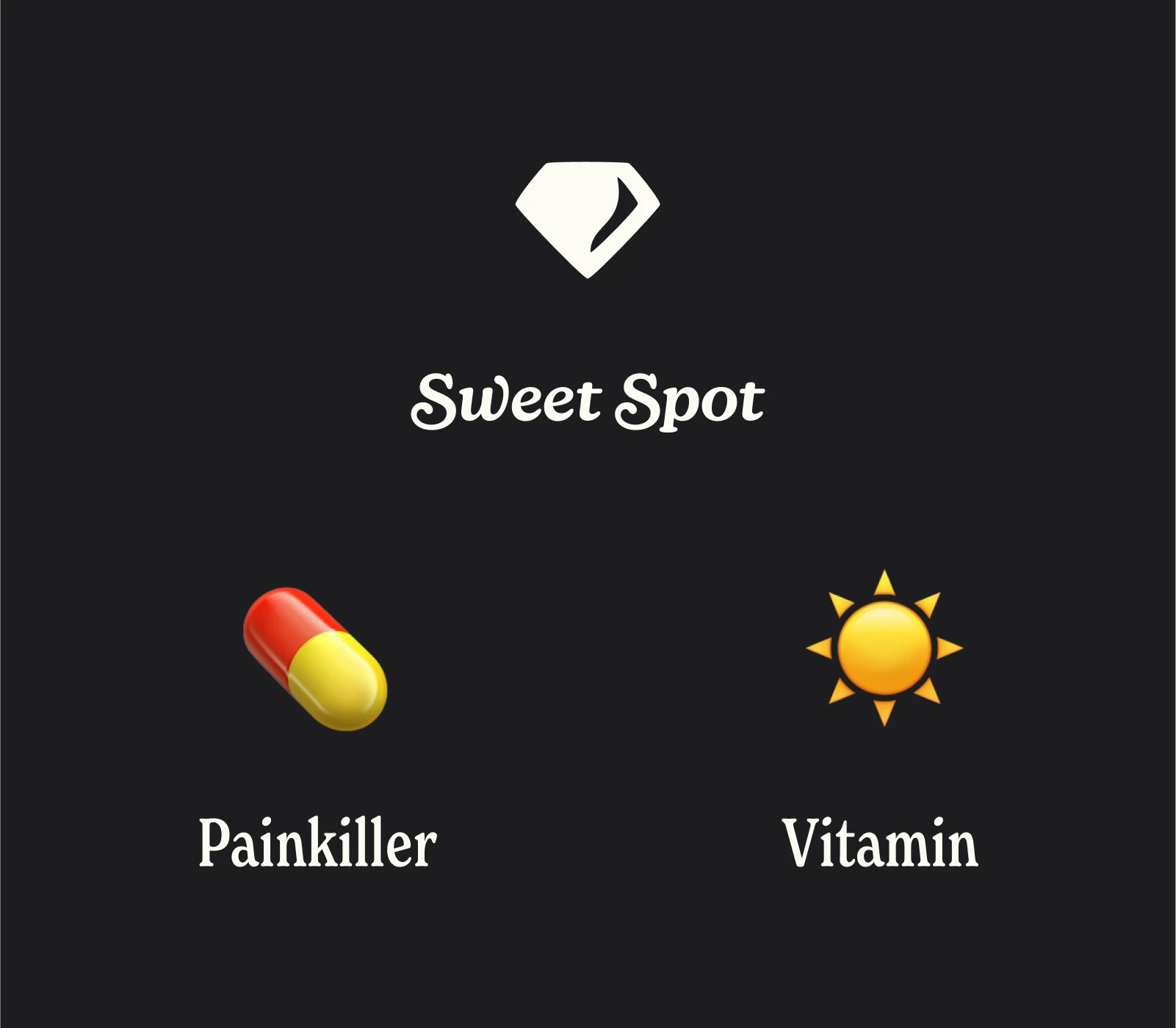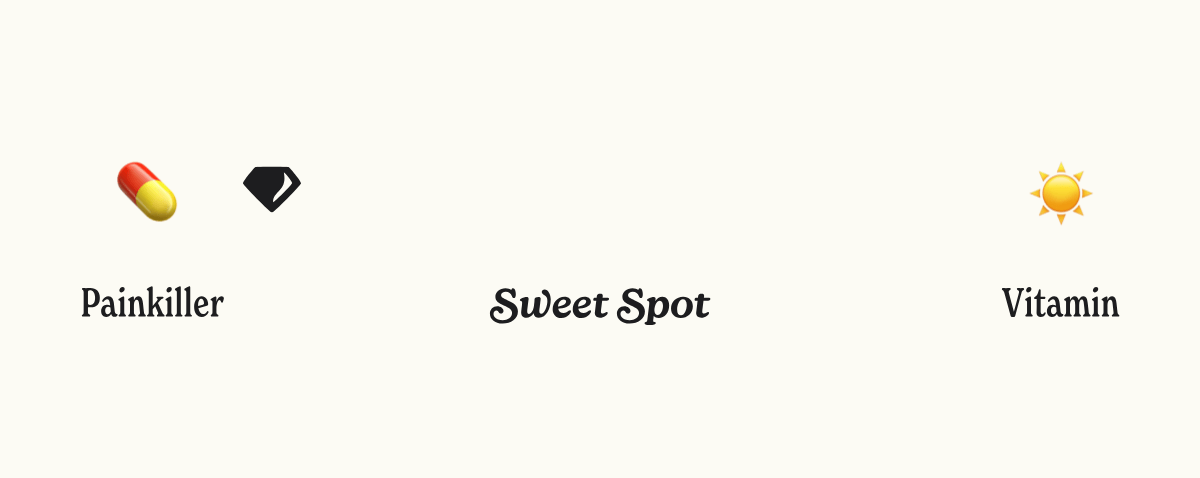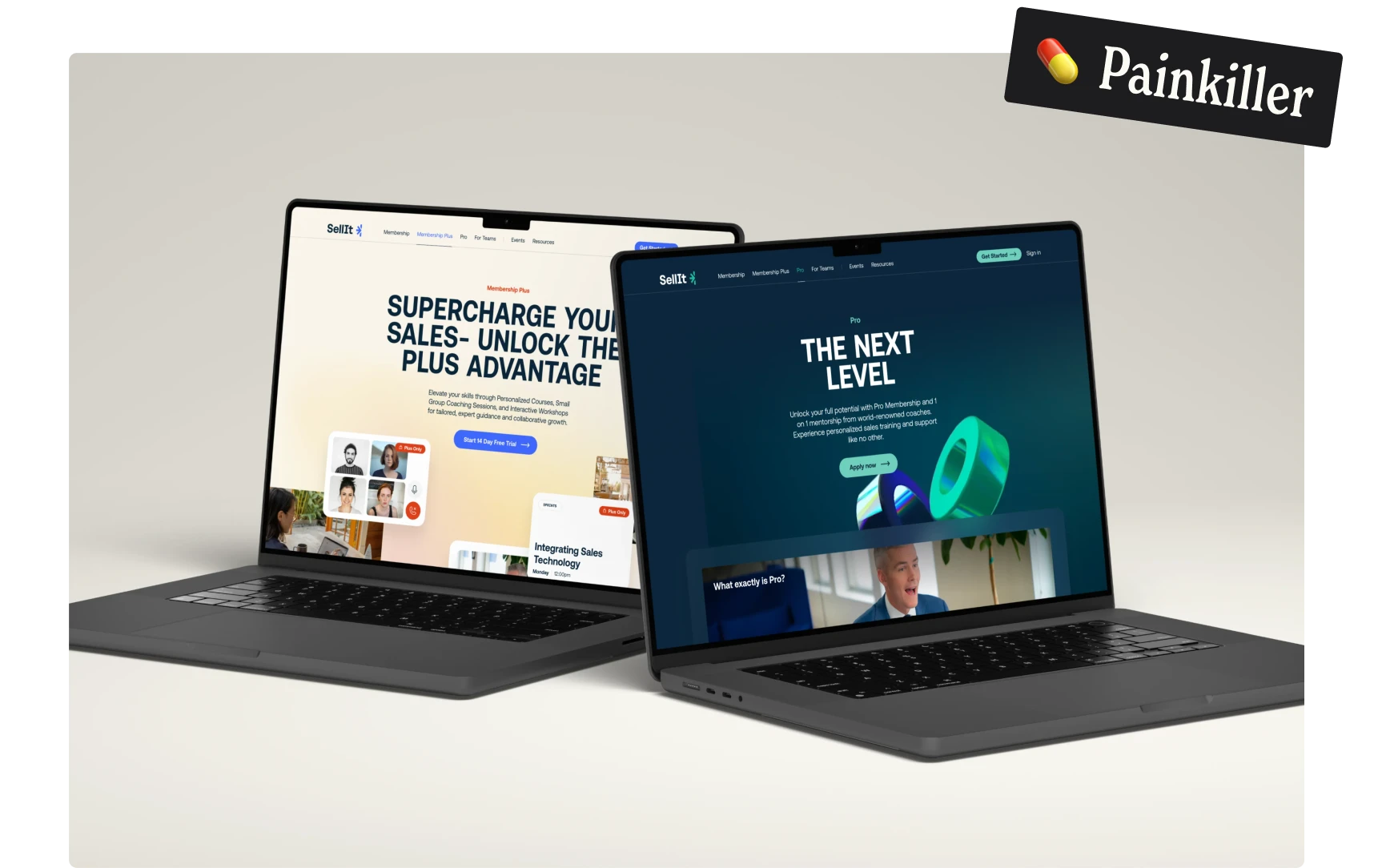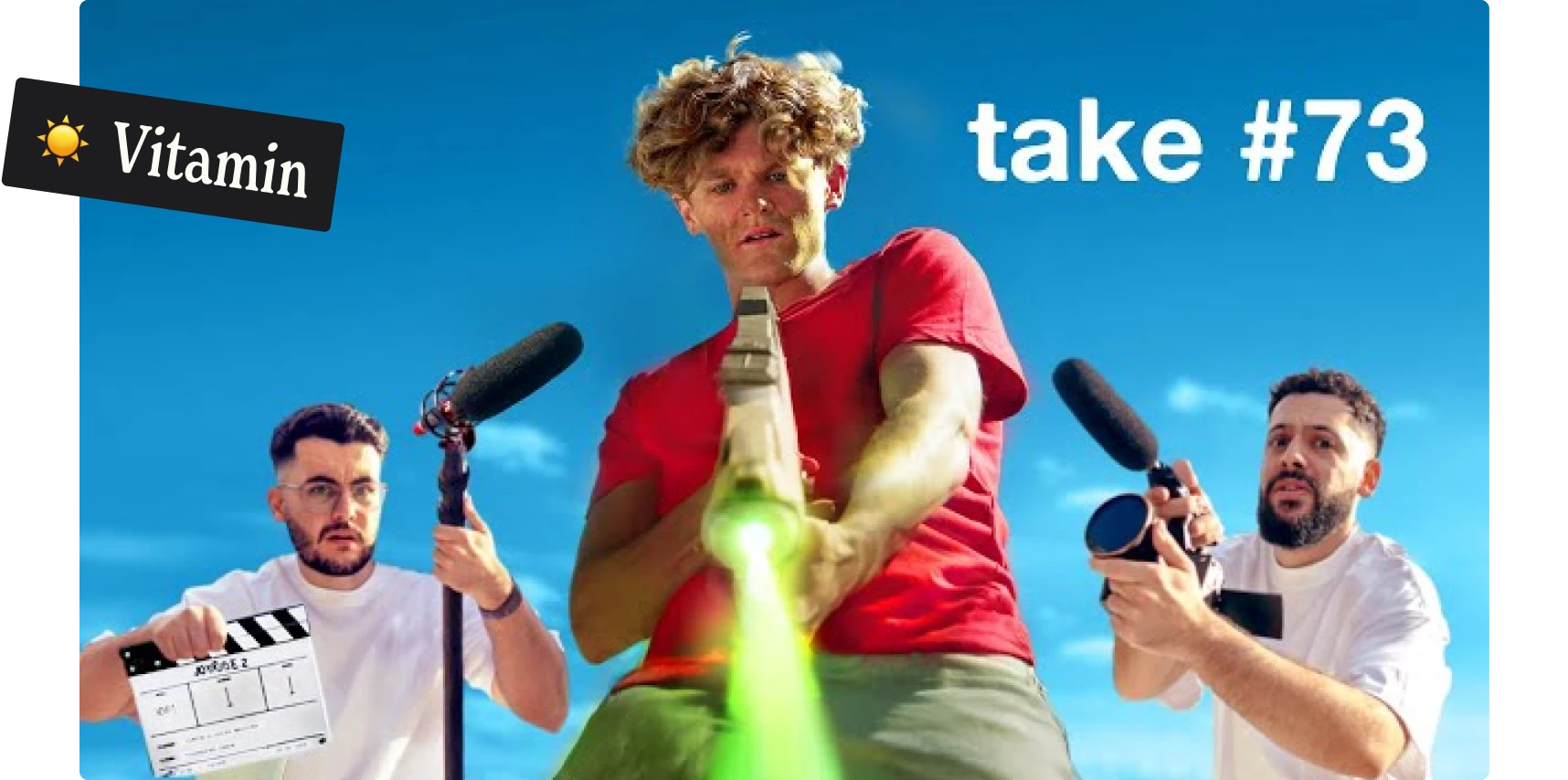
Everyone owns Tylenol
In product strategy, there's a simple but powerful concept: painkillers vs. vitamins.
Painkillers solve urgent, specific problems. A market actively seeks solutions because the problem is painful enough that they'll pay to make it go away.
Vitamins provide general improvement or enhancement. They're nice to have, but not urgent. People know they should take vitamins, but they often don't, and when money gets tight, vitamins are one of the first thing to go.
Think about any headache you’ve ever had: you’d pay $15 for a bottle of Advil without thinking twice. But you might hesitate to spend $15 on a multivitamin, even knowing it's "good for you."
The same logic applies to creator-led products, and more Importantly for the identification of creators who might be a good fit for a product, it applies to their content.

Where some creators fall on the spectrum
Let me show you what this looks like in practice with three creators who illustrate different points on the painkiller-vitamin spectrum.
Ryan Serhant: Pure Painkiller

Ryan Serhant built his audience around real estate expertise, but his product, Sell It, addresses a much broader pain point: the inability to sell effectively.
Whether you're selling real estate, convincing your boss to give you a raise, or trying to get your kids to eat vegetables, Ryan identified that people struggle with influence and persuasion in all areas of life.
His audience doesn't come to him thinking, "I should probably get better at selling someday." They come because they have a specific situation where they need to sell something or someone, and they're struggling.
That's a painkiller. Urgent, specific, and worth paying to solve.
And perhaps most interesting, his business took off when he started making content about addressing this pain vs. strictly showing off property listings.
Sticks: Pure Vitamin

On the other end of the spectrum, you have the YouTube duo, Sticks. They two brothers who create incredibly entertaining movie trailers about YouTube creators and internet culture.
They are one of Miles' current YT crushes ❤️
Their content is amazing. It's funny, emotionally captivating, extremely well-produced, and their audience genuinely loves it. But what problem does it solve?
People watch Sticks for the emotional experience. It's entertaining, it makes them laugh, it gives them something to share with friends. But there's no urgent pain point being addressed.
What would a Sticks product even look like? A course on making movie trailers? A community for people who love internet culture? These might work, but they'd be vitamins—nice to have, but not essential.
(But also Luke and Curtis if you ever want to make something please hit me up!)
Miss Excel: The Sweet Spot

Miss Excel occupies the most interesting position on this spectrum. She teaches Microsoft Excel and other Microsoft products, which is clearly a painkiller for many people. If you need Excel skills for work and don't have them, that's a genuine problem that affects your career and income.
But here's what makes her approach brilliant: she makes the painkiller feel like a vitamin.
Her content is fun, engaging, and entertaining. She's taken something that feels like medicine (learning Excel) and made it feel like candy 🍬 . She's addressing a real pain point, but packaging it in a way that doesn't feel painful.
This is why her products work so well. She's solving urgent problems, but her audience doesn't feel like they're taking medicine—they feel like they're treating themselves 😋
The art of reframing
So if you’re an entertainment creator, you should never launch a product, right?
Well, not quite.
Just because your content feels like a vitamin doesn't mean there isn't a painkiller hiding underneath. Sometimes it's about finding the right angle or the right audience.
Let's go back to Sticks for a moment. While their content is entertainment-focused, could we reframe it?
What if we looked at their audience differently? Maybe there are aspiring video editors in their audience who are inspired by their trailer-making skills. Maybe there are creators who struggle with storytelling and could learn from their narrative techniques.
Suddenly, we're not talking about entertainment—we're talking about career development and skill building.
The same piece of content can be a vitamin to one person and a painkiller to another. The key is identifying who needs what you're offering as a solution to a pressing problem.
5 questions to help see where your content site
So how do you figure out where your content falls on this spectrum? Here are some of the questions we find ourselves asking creators:
1. What brings people to your content? Are they actively searching for solutions to problems, or are they browsing for entertainment/inspiration?
2. What do they do immediately after consuming your content? Do they take action, or do they just leave with great vibes?
3. What questions do you get most often? Repeated questions usually indicate pain points your audience is trying to solve. (If you don’t know, you’re not spending enough time in your comments and DMs)
4. When do people consume your content? Is it when they're stuck on something specific, or when they have free time?
5. Who else could find your content valuable for different reasons? Sometimes the painkiller audience isn't your current audience, but one that is adjacent to it.
The answers to these questions will tell you whether you're dealing with painkillers, vitamins, or if you might need to expire opportunities to reframe.
Oftentimes, the significance of the opportunity comes down to what portion of an audience is also a potential customer for the product. If it’s too small, it’s probably not worth doing.
So why does this even matter?
Understanding this framework changes (and certainly changed for me) how you approach product development entirely.
If your content is primarily vitamin-based, you have a few options:
- Find ways to reframe it as a painkiller for a specific audience segment
- Create products that serve vitamin purposes but acknowledge they'll be harder to sell
- Shift your content strategy to address more specific pain points → We don’t really recommend this, FWIW
If your content already addresses pain points, you're in a much stronger position to create products that people will actually buy.
The goal of this exercise isn't to judge whether vitamin or painkiller content is "better". They both have their place and obviously people can build exceptional creator businesses around more vitamin-oriented content.
The goal is to understand what you're working with so you can set realistic expectations and make strategic decisions. The reason we think about this so much is so that we can be candid when we speak to creators about whether or not we genuinely believe they have the opportunity to build something.
And hey - we’ve been wrong before and will be wrong again, but this is what has served me well so far 😁



















